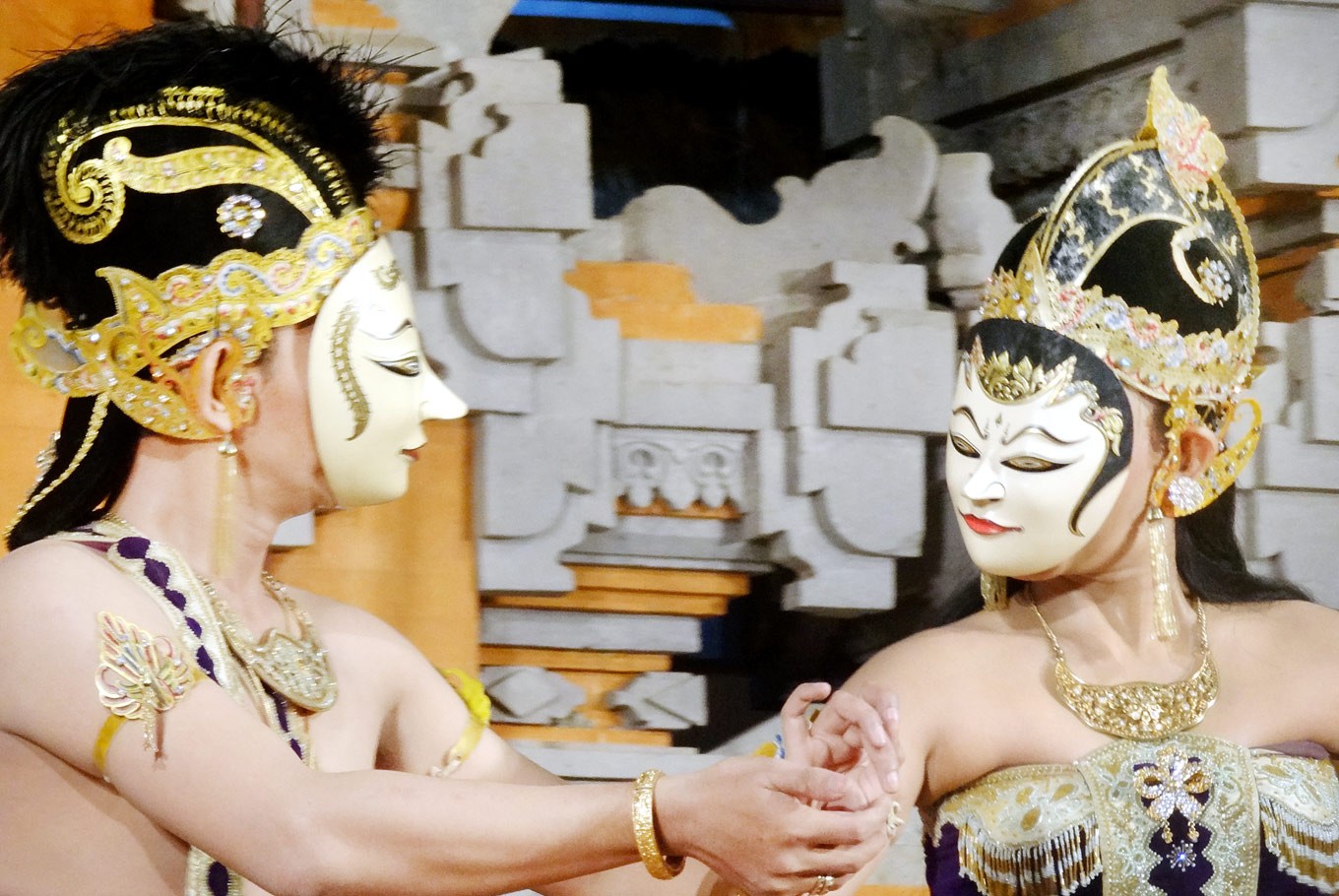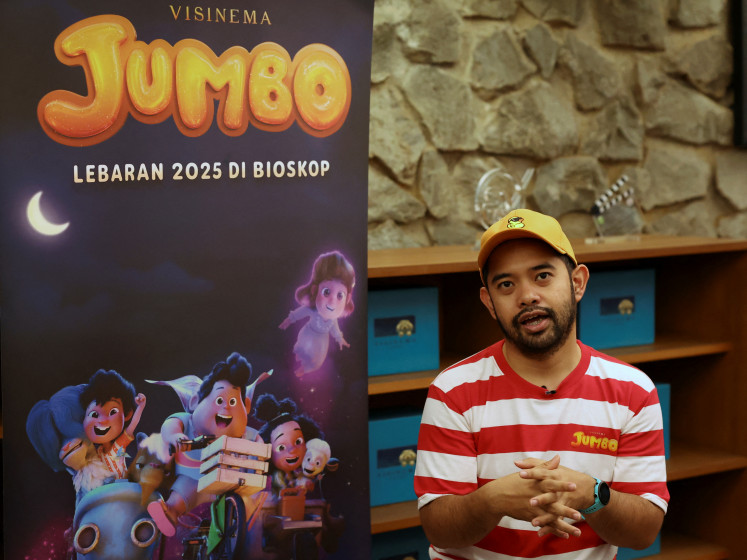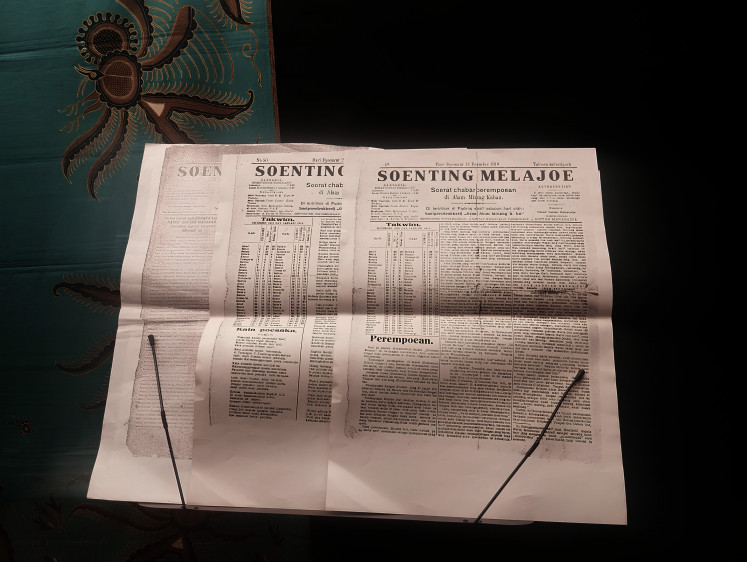Panji Asmarabangun and Sekartaji: Classic Indonesian tale celebrates love
The tale of Panji and Sekartaji explores the heroism and love of the two main characters. The United Nations Educational, Scientific and Cultural Organization (UNESCO) has even named Panji a Memory of The World (MoW).
Change text size
Gift Premium Articles
to Anyone
 Javanese style: masked dancers perform a version of the story of Panji. The Surakarta-based troupe underlines the refined and graceful style of Javanese traditional dance. (2018 International Panji/Inao Festival/File)
Javanese style: masked dancers perform a version of the story of Panji. The Surakarta-based troupe underlines the refined and graceful style of Javanese traditional dance. (2018 International Panji/Inao Festival/File)
M
any regard February as the month of love, as embodied by Valentine’s Day. The story behind the holiday varies, but the mainstream telling involves a saint who was sentenced to death in 278 AD by Emperor Claudius II Gothicus of Ancient Rome.
The saint married a couple secretly so that the husband could avoid the obligation to serve in the military. The Roman emperor forbade young soldiers to marry in order to keep their spirit on the battlefield.
In Indonesia, cultural expert Henri Nurcahhyo says the story of Prince Inu Kertapati of the Jenggala kingdom, known as Panji Asmarabangun, and Sekartaji, or Princess Galuh Chandrakirana of the Kediri kingdom, is a good representation of local wisdom in the celebration of Valentine’s Day.
The tale of Panji and Sekartaji explores the heroism and love of the two main characters.
The United Nations Educational, Scientific and Cultural Organization (UNESCO) has even named Panji a Memory of The World (MoW).
“It’s too bad that no one relates Valentine’s Day to the story of Panji, especially the romantic story between Prince Panji Asmarabangun and Princess Sekartaji," said Henri, who is the founder of the Panji Cultural Conservation Center.
He said their romance did not go smoothly. There were contentions and challenges. However, they eventually united. They even united two kingdoms in conflict, he said.
Henri emphasized that in the spirit of the Valentine’s Day, the Panji story was not exaggerating.
He went on to say that the Panji story was part of a saga, from the Ande-Ande Lumut (a pseudonym for Prince Panji Asmarabangun) sequel to the Panji Laras sequel, with a happy ending.
“Compare it to Romeo and Juliet or the [story of] Valentine’s Day itself, which is related to the beheading of the saint,” he said.
Henri said celebrating the Valentine’s Day in the Indonesian style was a perfect moment to reintroduce the country’s cultural heritage of Panji. Despite the fact that it was fictional, it had a strong connection with the celebration of love.
The story of Panji was part of a countercultural reaction against classic Indian epics like the Mahabarata and Ramayana during the Majapahit kingdom, he added.
The Panji story, according to Henri, will not be popular unless it comes with creative economic products.
One way of realizing this is by presenting Panji-themed performances to help people remember the meaning of love and the value of struggle as presented in the story.
“As such, Valentine’s Day should not always be related to the execution of a saint,” he said.
In the form of a masked dance performance, a Panji-themed show was staged at Tugu Hotel in Malang, East Java, on Saturday night.
“We want to revive Indonesian arts and culture. February, as the month of love, deserves a celebration by presenting the spirit of Panji’s romance,” said the hotel’s public relations officer, Richard Wardhana.









